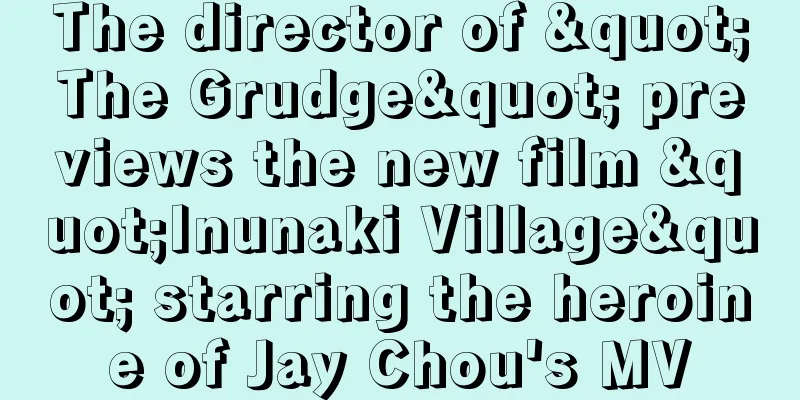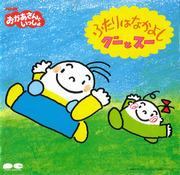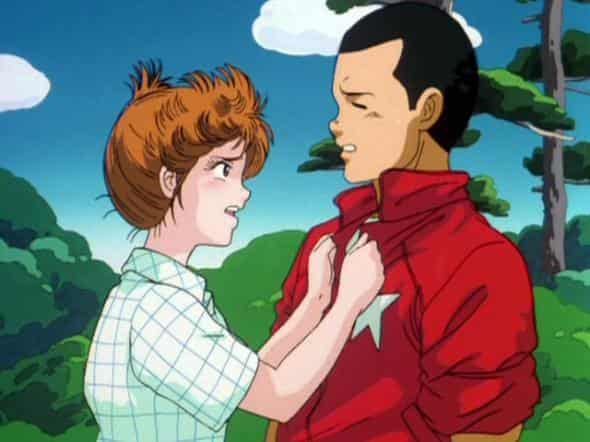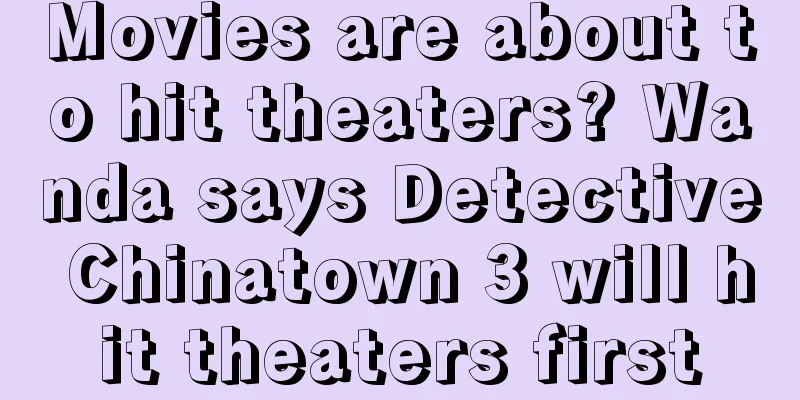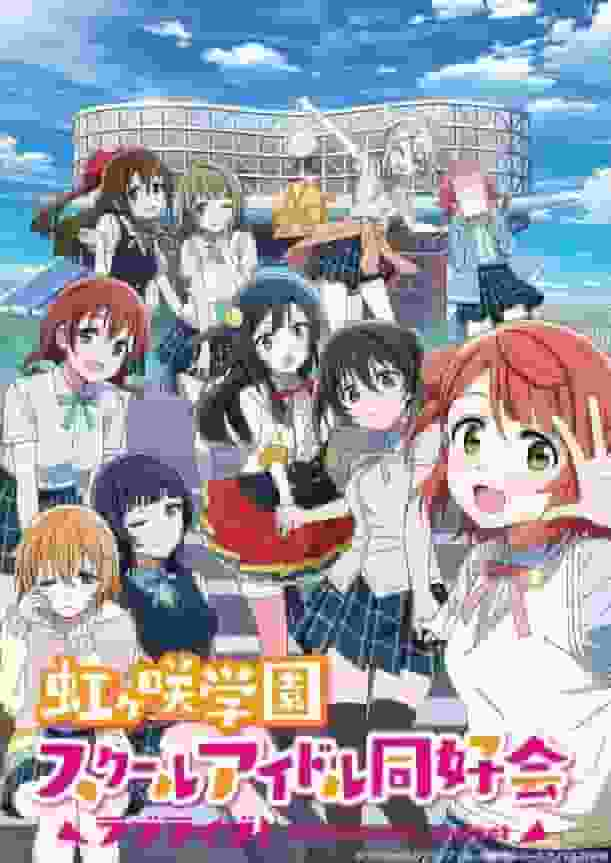The appeal and evaluation of the shadow picture film "Jack and the Beanstalk": the pinnacle of visual art

Shadow picture movie Jack and the beanstalk - Shadow picture movie Jack and the beanstalk■ Public Mediatheater ■ Original MediaAnime Original ■ Release date1941 ■Frequencies15 min ■ Number of EpisodesEpisode 1 ■Original StoryKazugoro Arai and Nakaya Tobiishi ■ DirectorKazugoro Arai and Nakaya Tobiishi ■ ProductionAsahi Films ■ExplanationA shadow puppet film adaptation of an English folk tale. Jack and the Beanstalk tells the story of a poor boy, Jack, who gets magic beans that grow into a giant beanstalk and goes on an adventure to a giant's castle in the clouds. This shadow puppet film was produced by Kazugoro Arai and Chuya Tobiishi, and released in 1941. The unique expression method of shadow puppetry brings out the fantastical atmosphere of the story to the fullest. Source: History of Japanese Animation Films, p. 225 ■ Main staff・Original story, composition and photography: Kazugoro Arai, Chuya Tobiishi ・Music: Muneyoshi Fukuda ・Performance: Asahi Film Orchestra Detailed review and recommendation of the movie Jack and the Beanstalk■ Story and ThemeJack and the Beanstalk is an old English folk tale that has been loved by many people. This shadow puppet film faithfully reproduces the original story, but uses shadow puppetry to depict deeper themes. The story of a poor boy, Jack, who obtains magic beans and climbs a giant beanstalk to reach a giant's castle symbolizes courage, hope, and a spirit of adventure. In addition, the scene in which Jack steals the golden egg from the giant highlights a moral issue, and contains elements that make the audience think. ■ The expressive power of shadow artShadow puppetry is a simple method of expression, yet has a rich power of expression. In this film, shadow puppetry is used to bring out the fantastical atmosphere of the story to the fullest. In the scene where Jack climbs the beanstalk, the shadow puppet's movements are smooth, creating the illusion that Jack is really climbing the beanstalk. In addition, in scenes featuring the giant's castle and the golden eggs, the shadow puppet's use of color and light is exquisite, creating a strong visual impact. The expressive power of shadow puppetry is perhaps the greatest attraction of this film. ■Music and SoundMusic and sound are also important elements of the film. The music by Muneyoshi Fukuda skillfully changes as the story unfolds, enhancing the audience's emotions. In particular, the music in the scene where Jack climbs the beanstalk creates a sense of tension and adventure, and has the power to draw the audience into the world of the story. The performance by the Asahi Film Orchestra also enhances the quality of the music and livens up the atmosphere of the film as a whole. Sound effects are also used in conjunction with the movement of the shadow puppets, allowing the viewer to enjoy the story both visually and aurally. ■Director and staffArai Kazugoro and Tobiishi Chuya were responsible for the original concept, composition and photography of this film. Their deep understanding and technique of shadow puppetry are the foundation of this film's success. Their skills shine particularly in the way they use the movement and color of the shadow puppets. Fukuda Sokichi's music also plays an important role in evoking the emotions of the audience, skillfully changing in line with the development of the story. The performance by the Asahi Film Orchestra also enhances the quality of the music and adds to the overall atmosphere of the film. The cooperation of these staff members was a key element in completing this film. ■ Historical BackgroundThe year this film was released was in the midst of World War II, and the effects of the war were strongly felt even in Japan. However, this film does not evoke the shadow of war and is one that you can enjoy purely for its story. By using shadow puppetry as a form of expression, you can temporarily escape the reality of war and immerse yourself in a fantasy world. This can also be said to be one of the film's charms. Furthermore, this film occupies an important position in the history of Japanese animation films in 1941, and is regarded as a work that showed the potential of shadow puppetry films. Source: History of Japanese Animation Films, p. 225 ■ Recommendations and ratingsThe shadow picture film Jack and the Beanstalk is a work that allows viewers to enjoy a fantastical story using the unique method of expression known as shadow puppetry. The story faithfully reproduces the original Jack and the Beanstalk, while using the expressive power of shadow puppetry and the power of music to depict deep themes. In particular, the scenes where Jack climbs the beanstalk and the giant's castle are made with exquisite use of shadow puppet movement and color, creating a visual impact. In addition, the music by Sokichi Fukuda and the performance by the Asahi Film Orchestra also play an important role in evoking the emotions of the audience, skillfully changing according to the development of the story. This film can be enjoyed by a wide range of age groups, from children to adults. It is especially recommended for those who are interested in the method of expression known as shadow art, and for those who want to enjoy a fantastical story. It is also considered an important work in the history of Japanese animation films from 1941, and is also worth knowing about its historical background. Shadow Art Film Jack and the Beanstalk is a wonderful work that allows you to feel the charm of shadow art and the depth of the story. ■ Related works and recommendationsWe recommend the following films related to the movie Jack and the Beanstalk. These films also allow you to enjoy shadow puppets and fantastical stories.
■ SummaryThe shadow picture film Jack and the Beanstalk is a work that allows you to enjoy a fantastic story using the unique method of expression called shadow puppetry. While the story faithfully reproduces the original Jack and the Beanstalk, it also depicts deep themes through the expressive power of shadow puppetry and the power of music. In particular, the scene where Jack climbs the beanstalk and the scene at the giant's castle are exquisite in the use of shadow puppet movement and color, giving a visual impact. In addition, the music by Sokichi Fukuda and the performance by the Asahi Film Orchestra also skillfully change according to the development of the story, playing an important role in evoking the emotions of the audience. This film is a work that can be enjoyed by a wide range of age groups, from children to adults, and is a wonderful work that allows you to feel the charm of shadow puppetry and the depth of the story. As related works, we also recommend the shadow puppet animations "Momotaro" and "Urashima Taro" and the animated film "Jack and the Beanstalk". These works also allow you to enjoy shadow puppetry and fantastic stories. The 1941 film "Jack and the Beanstalk" is an important part of the history of Japanese animation, and is also worth seeing for its historical background. |
>>: The production process of voice comics and their evaluation
Recommend
Inazuma Eleven the Movie 2025 review: An exciting and moving theatrical experience that exceeds expectations
"Inazuma Eleven the Movie 2025" - Kicko...
A thorough review of the first episode of the black and white version of Obake no Q-taro!
Obake no Q-taro: The appeal of the monochrome ver...
Pixar's new film "Summer Friends" Chinese subtitles trailer will be released in North America on June 18
Directed by Errico Casarosa, the director of &quo...
New 007 actor is being sought: around 30 years old, male and not white
James Bond producer Barbara Broccoli said they ar...
The appeal and reviews of "The Marginal Service": A thorough analysis of the exploits of its unique heroes
"THE MARGINAL SERVICE": A new type of a...
"Counting Songs" Minna no Uta: Ratings and Recommendations for Charming Anime
Counting Songs for Everyone - Kazoeuta "Coun...
'Super Mario Bros. Movie' theme song 'Princess Peach' not nominated for an Oscar
The animated film "Super Mario Bros.: The Mo...
The Japanese manga "Monthly Girls" is adapted into a live-action drama "Kaihua! Girls' Man" and the first trailer is released
The first trailer for the live-action drama "...
The appeal and reviews of "Aim for the Ace! 2": Experience a new world of tennis
"Aim for the Ace! 2" - A hot drama of y...
SCOOPERS: A thorough review of the new generation of hero anime!
SCOOPERS - In-depth reviews and comprehensive inf...
A thorough review of the music clips from Mobile Police Patlabor!
Mobile Police Patlabor MUSIC CLIPS - Mobile Polic...
The original house of the classic horror film "The Conjuring" was sold at a high price. The new owner continues to study the supernatural
The classic horror film "The Conjuring"...
Amazon's "Lord of the Rings" key member quits, the latter is a leading Tolkien researcher
According to reports, the production team of Amaz...
Tokyo Revengers Season 1: A moving story about time travel and the world of gangsters
Tokyo Revengers Season 1 - A moving and exciting ...
"His and Her Circumstances" review: A realistic portrayal of youth and character development
"His and Her Circumstances": A masterpi...

